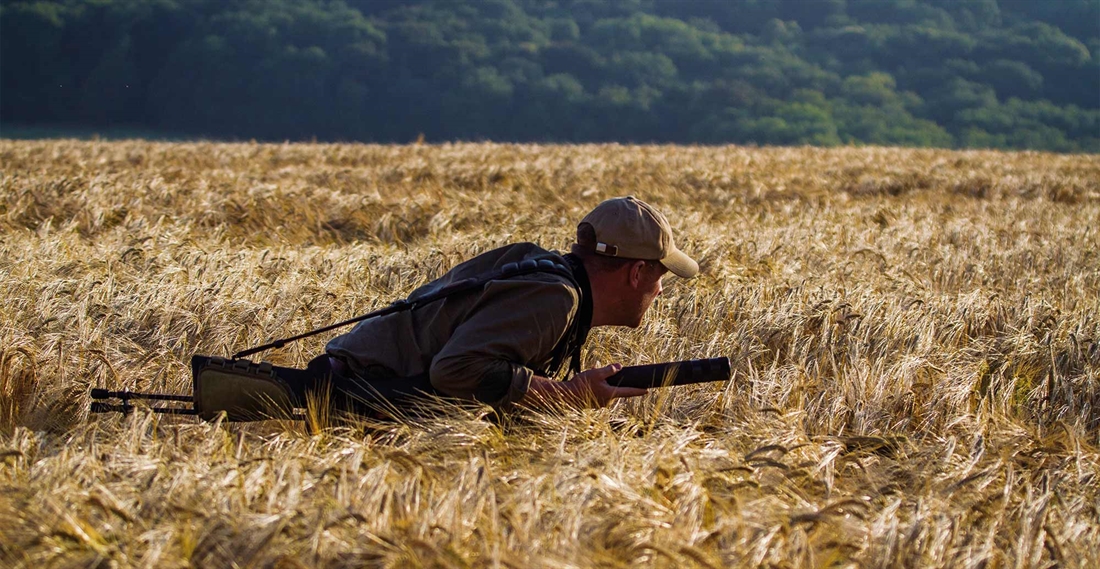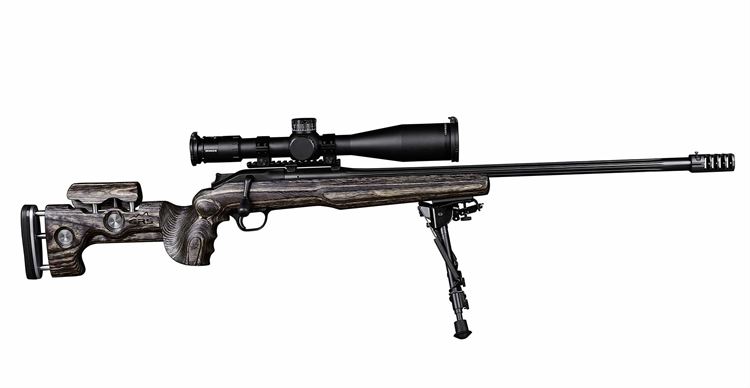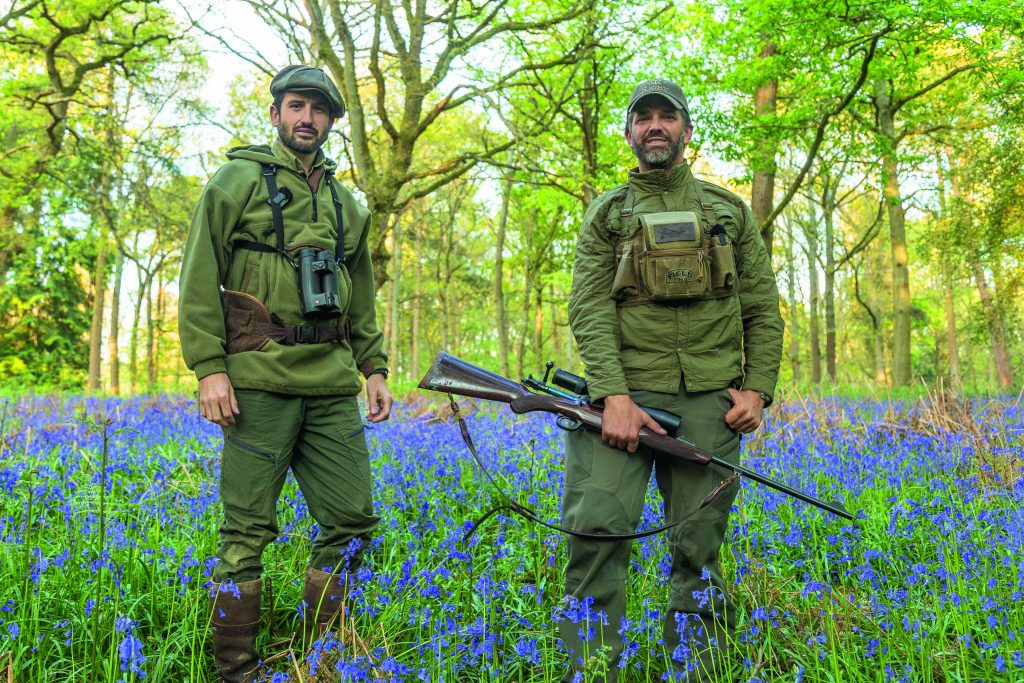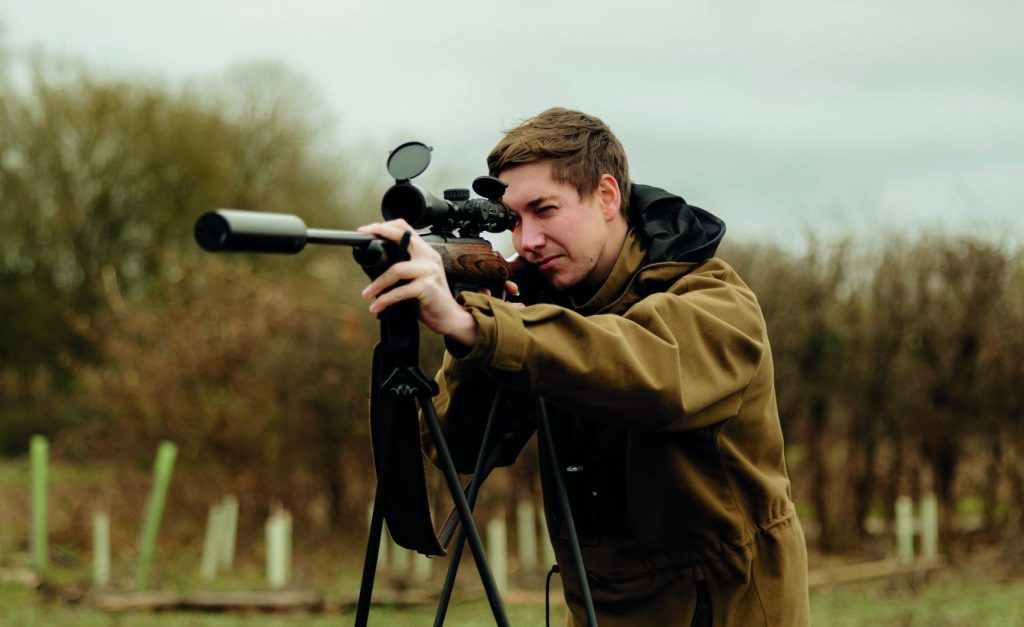Stalking or sniping
Modern technology is no substitute for good fieldcraft and marksmanship.

I recently met a charming gentleman at a rifle range. Having stalked all over the world for many years, he has shot the Big Five as well as chamois, mouflon and Marco Polo sheep. He was checking the the zero of his rifle before a trip to Sussex to stalk roebucks with a friend and professional stalker he had hunted with long and often.
His calibre of choice was 7×64, in the form of a classic British bolt action, with a 7×50 fixed power scope, wooden stock and no moderator. He was a decent Shot, firing eight or 10 rounds all in or very close to the bull and he was satisfied. He said that he never took shots over 100 yards, preferring to get closer. The rifle was an old friend and all he needed.
This made me think about the direction in which stalking has moved in recent years. Are we relying on technology too much in taking long-range shots, when really, we should be improving our fieldcraft, stalking technique and getting closer, to provide more of a challenge?
There is a plethora of so-called ‘black’ rifles for sale – a look in any rifle shooting magazine or website will bring them up – very aggressive looking pseudo-military kit, often with heavy barrels and muzzle brakes and always sporting synthetic stocks. A marketing dream. Couple this with some cutting-edge optics featuring a ballistic turret or ballistic drop compensator (BDC), ASV, moderator, good quality hand-loads or factory ammunition, and you have something capable of hitting a target at 1,000 yards. Take it into the mountains of the Hindu Kush and you could be a sniper in an instant; just a few clicks of the mouse and some card details… The real question being, is the shooter capable of making these long-range shots accurately and consistently in the field? And, moreover, is it ethical? Is it stalking?
When I was a boy growing up near Henley on Thames, I had an air rifle and used to stalk rabbits in fields at the back of the house. My trusty .177 had a very limited range and I learnt that to be successful I had to get close to my rabbit or the shot was likely to bounce off or wound it. From that experience I learnt fieldcraft, and how to move quietly using the available cover to my best advantage. With the sun behind my back and the wind in my face, I learnt to stalk, which stood me in good stead as I grew up and moved on to ‘proper’ guns and rifles. I suspect that today it is much harder for kids to gain this sort of experience; if they were sneaking around on their own as we used to do, Social Services would be onto the case in a flash, not to mention the inevitable armed response team! Nonetheless, if you take your stalking seriously, these skills are crucially important.
The Oxford English Dictionary definition of stalking is ‘to pursue or approach stealthily’. It defines sniping as ‘shooting at someone accurately, especially from a hiding place or at long range’. A quick trawl of YouTube will turn up videos of long-range hunting, particularly of our American cousins, with shots on moose, mule deer, caribou etc. out to 1,000 yards and more. The shots are all successful, of course, but how many did they wound and edit-out before they got the one shot you are looking at.
In the UK our distances tend to be shorter, but it is theoretically possible to take shots out to 500 yards, particularly in the Scottish Highlands. If you want to shoot long-range at live animals, I suggest you should think carefully about the ethics of it first. At the very least, you should be able to shoot consistent four-shot 1″ groups at 100 yards, by which I mean time after time, not a one-off group or two out of three times. Next, you need a ballistics chart and a chronograph, because you cannot shoot accurately at long range unless you know the speed of the bullet and its ballistic co-efficient. Now you will need a ballistics calculator to input the bullet weight, speed, ballistic co-efficient, height of the sight above the bore, air temperature, humidity and height above sea level. This will work out the trajectory of the bullet over a given distance or distances. If the air temperature, humidity, altitude etc. change much, you will need to redo the calculations.
Then comes the hard bit, the wind. There are all sorts of anemometers and gizmos you can get to tell you the wind speed at one particular point, but over 300 yards or more, the wind speed will vary and may change direction several times over the distance. With a 5mph wind, a 168gr .308 bullet will drift about 3.7″ at 300 yards and 11.1″ at 500, which is fine in theory, but the real world is rather more variable. At 15mph, the drift would be 11.1″ at 300 yards or 33.3″ at 500 yards. Surprised? You shouldn’t be.
So there you are, out on the hill, and you spy a nice red, blissfully unaware of you because you are a speck in its limited vision. You set up your rifle on its bipod, now you laser the distance to the target and enter that into the ballistic calculator on your smartphone, which you programmed that morning with the local air temperature, humidity, altitude etc. With your anemometer you measure the wind and pray that it is constant over the distance to the animal, and your computer gives you a “firing solution”. You dial in the compensation in minutes of angle, (MOA’s) or MRad’s, (of course you know what an MRad or MOA is, don’t you?), so at 600 yards with a 10mph crosswind, that’s 5.5 MOA for wind and 14.6 MOA for drop over distance, (92″ or 7.5ft). You set yourself up carefully and make the shot, hoping that everything is good. Of course, if there was a slight puff of wind or it suddenly dropped, you will have just hit the poor old beast in the rump. Even if the shot is good and the animal drops dead on the spot, what have you achieved?
Thinking back to my client with his traditional classic bolt action rifle and the satisfaction he gets from a successful stalk, I wonder whether we should be focussing more on fieldcraft and getting closer to our quarry than just relying on technology?
If we learn to move quietly, observing the wildlife around us, we will derive far more enjoyment from our stalking. The stalking experience should not be just about making the shot; if we get one at all it should include the landscape and scenery around us, the golden eagle soaring above, the skylark singing out joyously, the owls and bats that come out as we sit in a high seat on an evening, and the badger snuffling below. We can practise our fieldcraft while we are out walking quietly in the countryside, without a rifle. Try to see how close you can get to a fox, rabbit or deer. So if you don’t have your own land to stalk on, you can still hone your skills ready for your next foray with the rifle.
Whatever type of rifle we shoot, and at whatever range, we should be acutely aware of how it works and our capabilities with it. Learn the basics of trigger release, breathing control and set the scope up for your eyes and, most importantly, practise with it often. If you want to shoot long-range, you will need a facility where you can not only learn the basics but practise them too; such places are few and far between on our crowded island. Never rely on a ballistic calculator without proving it on the range; shoot at known distances with the information from your ballistic program and see whether it holds true at the maximum distance you intend to shoot over – and intermediate ones too. There is no substitute for time spent on the range. Practise, practise, practise. You owe it to the animals you shoot at.
Related Articles
Get the latest news delivered direct to your door
Subscribe to Fieldsports Journal
Elevate your experience in the field with a subscription to Fieldsports Journal, the premium publication for passionate country sports enthusiasts. This bi-monthly journal delivers unparalleled coverage of game shooting, fishing and big game across the UK and beyond.
Each issue offers a stunning collection of in-depth features, expert opinions and world-class photography, all presented in a timeless yet contemporary design.
Save 10% on shop price when you subscribe, with a choice of packages that work for you. Choose from Print & Digital or Digital only with each journal delivered directly to your door or via the app every other month, plus access to past issues with the digital back issue library.











